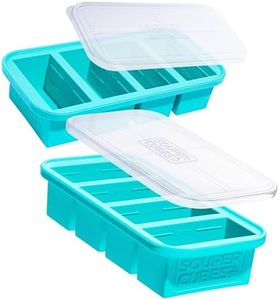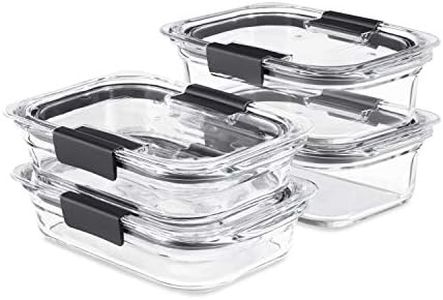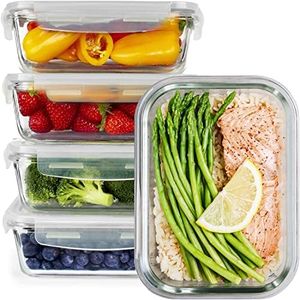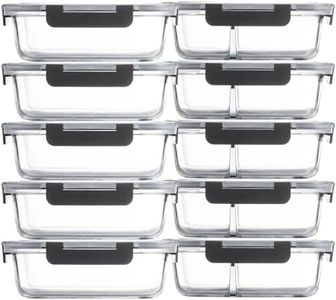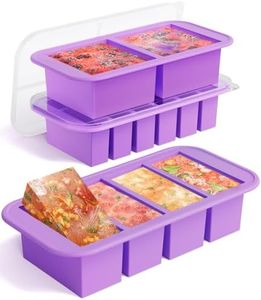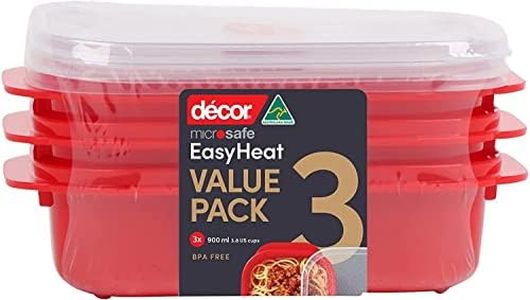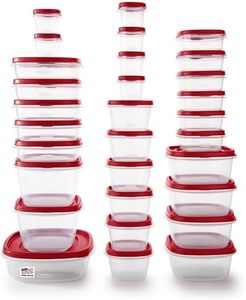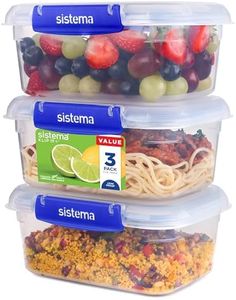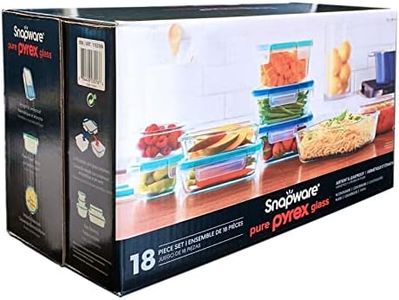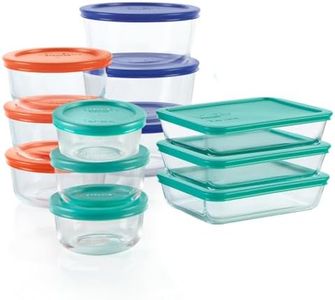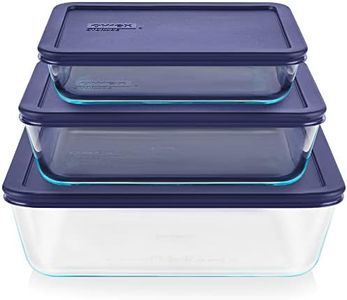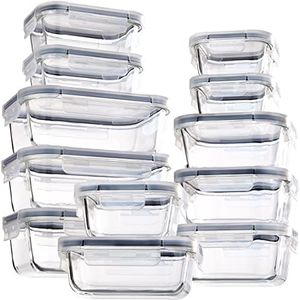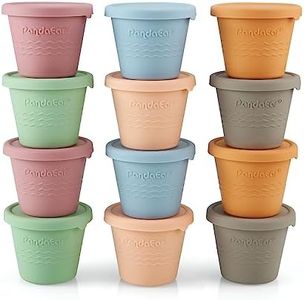We Use CookiesWe use cookies to enhance the security, performance,
functionality and for analytical and promotional activities. By continuing to browse this site you
are agreeing to our privacy policy
10 Best Freezer Containers
From leading brands and best sellers available on the web.Buying Guide for the Best Freezer Containers
Choosing the right freezer containers is important to keep your food fresh, organized, and safe in the freezer. The right container can help prevent freezer burn, maintain food quality, and make your life easier when it's time to thaw or reheat. Think about the types of food you freeze, how much storage space you have, and how you typically use these containers—such as for meal prepping, storing leftovers, or long-term preservation.MaterialFreezer containers are commonly made from plastic, glass, or silicone. The material affects durability, safety, and convenience. Plastic containers are lightweight and often stackable, but should be labeled as freezer-safe to avoid cracking at low temperatures. Glass containers are sturdy and don't stain or retain odors, but they can be heavier and more prone to breaking if dropped. Silicone containers are flexible and make it easy to remove frozen food but may not always hold their shape perfectly. When choosing, think about whether you need something lightweight and portable (plastic), more durable with no stain or odor absorption (glass), or easy food release and flexibility (silicone).
Size and ShapeFreezer containers come in all sorts of sizes and shapes to match different storage needs. Smaller containers are ideal for single servings or small amounts of ingredients, while larger ones are better for family meals or batch cooking. Square and rectangular containers often use space more efficiently in the freezer compared to round ones, which are better for soups or foods that need to be poured. To choose, consider your typical meal portions and your freezer’s space. If you freeze a variety of foods, a set with mixed sizes is generally most practical.
Airtightness and Seal QualityAirtight lids and good seals are crucial because they keep air and moisture out, preventing freezer burn and leaks. Some containers have snap-on lids, while others use screw-on or locking mechanisms. A tight seal helps preserve food longer and avoids unwanted odors mixing in the freezer. To pick the right one, test if the lid stays secure and consider if you need a leak-proof option, especially for liquids or soups.
StackabilityStackability refers to how well containers fit on top of each other, maximizing freezer space and keeping things neat. Containers made with flat lids and uniform shapes are usually easiest to stack, while oddly-shaped or rounded lids may slide or waste space. If your freezer is cramped or you store a lot, prioritize containers designed to stack securely.
Freezer-Safe CertificationNot all containers are made to handle the extreme cold of a freezer. Freezer-safe certification means the container won’t crack, shatter, or leach chemicals when frozen. Look for labels that clearly say 'freezer-safe' to make sure the product will stand up to repeated freezing. This is especially important for plastic and glass options. Always choose containers with this label if you plan to freeze them long-term.
Ease of CleaningA container that is easy to clean saves time and keeps things hygienic. Containers with smooth interior walls and dishwasher-safe labeling are better because they don’t trap food and can be cleaned more thoroughly. If you prefer handwashing or have limited dishwasher access, pick containers that come apart easily and don’t have many grooves or hard-to-reach spots.
TransparencyTransparent containers let you see what’s inside without opening them, which is practical for organization and avoiding forgotten leftovers. Opaque containers protect food from light but make it harder to identify contents. If easy identification is important, go for see-through containers; otherwise, be sure to have a good habit of labeling opaque ones.

